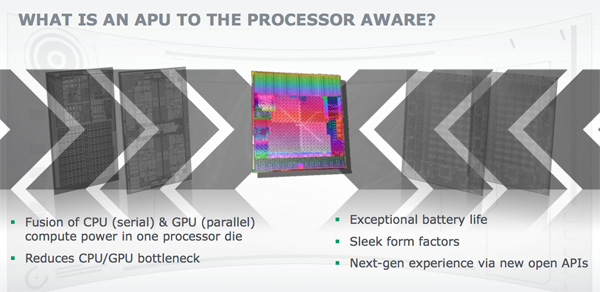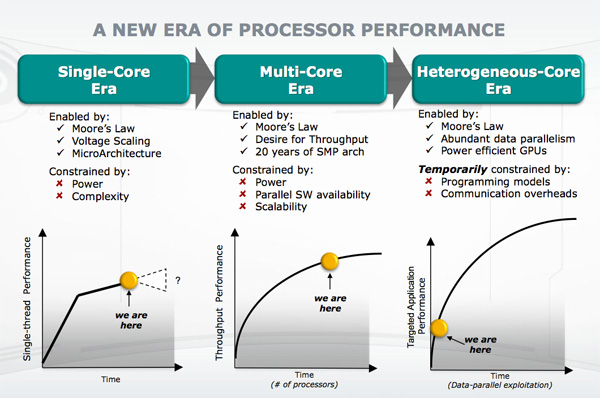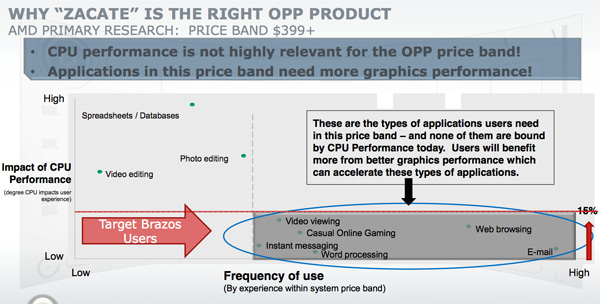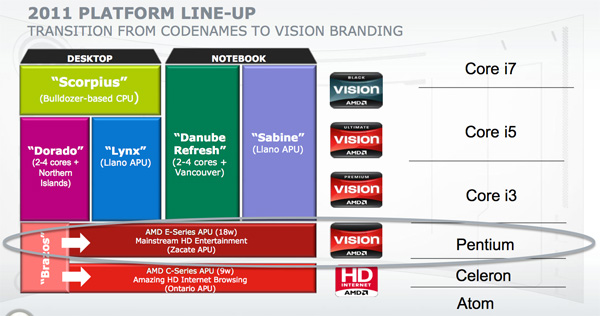Previewing AMD's Brazos, Part 1: More Details on Zacate/Ontario and Fusion
by Anand Lal Shimpi on November 9, 2010 1:09 AM ESTI hate to keep things from you all, but last week I was diligently working in a room at AMD’s new campus in Austin, Texas. You see, AMD wanted to give us more time with the Brazos/Zacate platform we tested at IDF ahead of its official launch. It’s too early for production worthy OEM systems and AMD wasn’t too keen on these reference platforms leaving its offices so it did the next best thing: fly us out to test the systems on AMD’s campus.
The rules were simple. We couldn’t run anything that would harm the system, but other than that we were free to bring whatever we wanted and test however we wanted. AMD dropped by our private room to check to see if we needed anything but other than that, it was all hands off.

The Brazos test platform
While I’d love to share performance data with you today, I can’t. You’ll have to wait another week or so for that. What AMD is allowing us to talk about are the specific configurations AMD’s first Fusion APUs will ship in and general impressions from the testing. Specific benchmarks are off limits unfortunately.
The platform felt final as far as stability goes. I didn’t encounter any crashes during my several hours of non-stop testing. Performance is also indicative of what will ship early next year. The system felt quick (very 11-inch MacBook Air like if you catch my drift) but you have to keep in mind that Zacate and its lower powered sibling Ontario will be used in systems priced between $299 - $549.














106 Comments
View All Comments
creathir - Tuesday, November 9, 2010 - link
It should be interesting to see how efficient these chips are under load. Could we be seeing the development of a pretty slick tablet platform here?Did you enjoy your time in Austin? It is such a beautiful place. Next time you're down this way ya need to take a drive out to Lost Maples State Park (about an hour west of San Antonio)
It's very nice.
Look forward to the performance numbers...
Dark_Archonis - Tuesday, November 9, 2010 - link
So the 9W TDP Ontario products will have Bobcat running at only 1-1.2Ghz? Lol, so much for all the AMD forum hype that Bobcat would "own" Atom.I think another problem with the 18W Zacate products is that they will compete with the low-end Celeron and Pentium chips. Intel may update their lineup and replace the Celerons/Pentiums with low end i3 models.
As expected, Bobcat will not even come close to 2Ghz clock rates.
Based on the data here in this article, Bobcat may not be the home run some people are expecting it to be.
cyrusfox - Tuesday, November 9, 2010 - link
There is so much fail in your statement. You think because ontario has a slower processor speed then atom (1Ghz to 1.6Ghz) That the atom processor is more powerfulI highly doubt Atom will have more CPU processing power than ontario. But even if atom is still more powerful in CPU compute, its crippled IGP brings it to its knees on any sort of multimedia. Ontario with its fusion APU will feel like it blows atoms out of the water as it seamlessly handles all the media you throw at it. This is huge for consumer satisfaction. Much more important than how fast it can compute super Pi.AnandThenMan - Tuesday, November 9, 2010 - link
Atom is a dog, both on the CPU and GPU side. Ever use an Atom based system? You need the long battery life, because it takes you forever to do anything. And forget about anything other than very basic graphics on the Atom.Atom based systems have a very high return rate because of this.
Dark_Archonis - Tuesday, November 9, 2010 - link
Except you're forgetting future Atom platforms will be system-on-a-chip designs. All future Atoms will be far more integrated than Ontario or Zacate platforms, because Ontario and Zacate will not be system-on-a-chip designs.The 9W Bobcats will compete with Atom, but the 18W products will compete with Celerons, Pentiums, and low-end i3s.
All Intel has to do is put a good GPU into future Atom SoC designs and whatever advantage Bobcat may have is negated. On that note, let's wait and see how the GPU is on future Atom platforms.
Jamahl - Tuesday, November 9, 2010 - link
A good gpu from intel? How far into the future are we talking about here?Dark_Archonis - Tuesday, November 9, 2010 - link
Sandy Bridge's integrated GPU will perform at roughly Geforce 310M performance levels, which is "good enough" for most average people. I don't think it would be very hard for Intel to integrate that GPU somehow with Atom in an SoC design.Prosthetic Head - Tuesday, November 9, 2010 - link
Just to point out here that AMD can easily integrate bobcat cores in to SoCs. They are being manufactured by TSMC and will shortly get even smaller and more efficient with a process shrink. AMD specifically negotiated the right to outsource manufacture and to sub-licence x86 technology in their recent settlement with Intel. That suggests to me that they do in fact intend to manufacture or licence out an x86 SoC design.meksta - Tuesday, November 9, 2010 - link
Except you are forgetting that you are comparing apples to oranges.Why would the 18W products compete with Celerons and Pentiums and I3s? If so, then you have to combine a southbridge and/or GPU into your calculations......oh how much will that work out to be?
taltamir - Wednesday, November 10, 2010 - link
Because they have similar power consumption. The intel ultra low power or whatever they call it now i3s reach such low power consumption levels.
but it requires intel to massively cut down clockspeed, and also to compete with a large expensive chip. The point of the atom is that its so damn small, this makes it really really cheap for intel to manufacture, thus increasing their margins. Could intel bring us an i3 with an extremely low clockspeed and power? yes...
will intel do that? probably not.